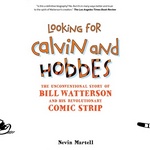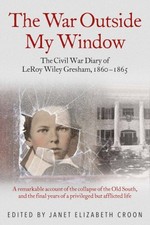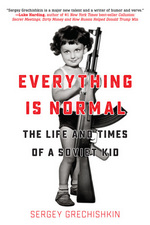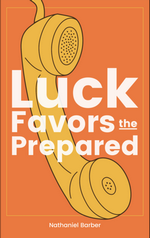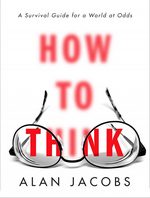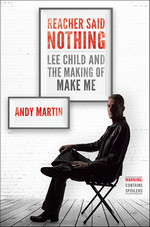There’s so much more I want to say, but I ran out of time — and went on pretty long already. It’s really bugging me all the things I wanted to talk about, but didn’t. There may be a follow-up. I updated this slightly after posting thanks to a comment from the publisher.
—
by Janet E. Croon, ed.
Hardcover, 480 pg. (includes an 8-page photo insert)
Savas Beatie, 2018
Read: May 1 – 28, 2018

When he was twelve, LeRoy Wiley Gresham, of Macon, Georgia starts keeping a daily journal (well, as close to it as anyone really ever does). The year is 1860 and he and his father are headed to Philadelphia to consult with leading doctors about LeRoy’s medical condition, which local physicians have been unsuccessful in dealing with — the book contains a medical foreword and afterword that will explain these circumstances better than LeRoy ever does (partially because he doesn’t have the whole story). From Philadelphia they return home and to talk of succession — it’s not long before the Confederacy is born and Fort Sumter is fired upon. This is the setting for these journals — published for the first time this year.
LeRoy was born to be a Southern Gentleman and was raised as such — and between the War, his age and disease, he never really had an opportunity to examine his upbringing. As such, he is incredibly partisan, shows nothing but contempt for the Union, Lincoln, the Union Army, etc. The language and attitudes he uses toward his family’s slaves (and pretty much everyone’s slaves) is par for the course during the Civil War, readers need to remember this going on. He is also a pretty astute observer and realist — when the tide begins to turn for the Confederacy, he’s aware and his upfront about it (there are even traces of “I told you so” to his writing when it comes to certain strategies).
Meanwhile, life continues — people go to school, crops are grown and harvested, babies are born, people die and are married, kids get pets. LeRoy’s family were staunch Presbyterians, his father a leader in the local church — presbytery and synod meetings are also reported on.
For LeRoy, the years after his return from Philadelphia (and those leading up to it, really) are also years of deteriorating health, bouts of pain, and ineffective treatments. Those who put this book together have determined (and it seems only likely) that there are two major health problems going on here — a horrific leg injury sustained when he was 8 and tuberculosis. Neither did him any favors — his life wasn’t going to be easy just with the injury, but TB made it short. Tracing the worsening of each is tragic — and LeRoy dies not long after the end of the War.
All of these topics are detailed and recorded — almost every day — in a few brief sentences. Sometimes it can be jarring the way he’ll go from casualty numbers, to talk about his coughing, to a comment on peach harvests and the book he’s reading in a paragraph a little briefer than some of the longer ones in this post. But that’s just what was on his mind that day. Sometimes there are strange doodles or other things recorded, lists of Bible questions, practice trials of his own developing signature and other things like that (often with photos included).
The War reporting is going to get the bulk of each reader’s attention. Which is completely understandable — and it gets about half of the space of the book, the other topics compete for the other half of the space. His information (as the wonderful footnotes demonstrate) is frequently mistaken — and he knows his, and will often speculate about as he reports what the newspapers say. We’re used to news stories developing over minutes and hours, LeRoy had to be content with learning about something days after the event, and then still learning details weeks later. His frustration about that is seen occasionally — especially as te War grinds on and it’s harder for newspapers to be printed and delivered (paper itself becomes scarce). At one point there’s such an outbreak of smallpox that there’s no one available to bring his family their newspaper, so they have to send someone to retrieve it — LeRoy’s utter disgust at that is both hard to believe and completely human. “Fascinating” doesn’t come close to reading his perceptions and understanding the events that are history to us – talking about famous battles as they’re happening and news is getting out. His account of Sherman’s March is incredible – and adds so much perspective to the contemporary reader’s own understanding.
Normally, this writing would be something I’d pan and complain about. But this was never intended for publication — that’s clear — it’s a young man’s private journal and reads like it. You see a growth in his style, his way of thinking — and reading. But it isn’t an easy read with a strong narrative pulling you along. It’s repetitive, full of details that mean only something to him, stupid humor written for an audience of one (which isn’t to say that I don’t appreciate his wit). Don’t expect to enjoy this read, to find a style that will grab you (or really, any style at all). It’s authentic — and not authentic in a “so well researched and told that it might as well be the real thing” way, but in a this is what this person thought and recorded about others’ thoughts in the 1860s to himself — it’s completely honest (well, there might be some self-deception/self-aggrandizement at work, but not much).
I grew to really like LeRoy — his attitude, his quiet faith, his patience, his stupid jokes, his intelligence. You watch someone’s life day-to-day for a few years and you almost can’t help it. His death — which I knew was coming before I opened the book, and knew was nigh given the date (and lack of pages left in the book) — struck me hard. I couldn’t believe it, really, but I got emotional in the last couple of entries.
His last entries are followed by the text of his obituary from the Macon Telegraph and a letter that his mother sent to her sister which filled in some details about his last days and condition. That letter is a great touch and helps you see that a lot of what you had learned about LeRoy from his writing was also seen by his family — it wasn’t just LeRoy’s self-image. You also see that LeRoy’s critical gaze, which is displayed frequently, was a family trait (but pretty understandable in the context)
The effort putting this book together — transcribing, deciphering, tracing the family members and friends — the medical research to diagnose LeRoy all these years later) — I can’t fathom. Croon deserves so much more reward than she’ll likely ever receive for this. Really, I’m in awe of her work. The Publisher’s Preface, Introduction, and Postscript (and aforementioned Medical Foreword/Afterword) are must-reads and will help the reader appreciate LeRoy’s own writing and Croon’s efforts.
Every so often, reading my email can be surreal — getting a request to read and post about this book was one of those times. The same form has led me to read a book about a P.I. with a talking (and sentient!) arm, a crime solving frog, and a werewolf rock star — and now, this literally unique book?* I’ve rarely felt so inadequate to the task. What do I know from historic diaries? Here’s what I can say — you have never read anything like this — it will appeal to the armchair historian in you (particularly if you’ve ever dabbled in being a Civil War buff); it’ll appeal to want an idea what everyday life was like 150 years ago; there’s a medical case study, too — this combination of themes is impossible to find anywhere else. This won’t be the easiest read you come across this year (whatever year it is that you come across it), but it’ll be one of the most compelling.
It feels stupid putting a star rating on this — but, hey, that’s the convention, so…no doubt about it:
—–

Disclaimer: I received an ARC of this book from the publisher in exchange for this post and my honest opinions.
—
* Which is not to say that there weren’t merit to these books or that there weren’t others — of comparable quality to this. I could provide lists.
 |
✔ Read a book about a historical event you’re interested in (fiction or non).
|
 So Let It Be Written: The Biography of Metallica’s James Hetfield
So Let It Be Written: The Biography of Metallica’s James Hetfield Here’s the Publisher’s synopsis:
Here’s the Publisher’s synopsis:




